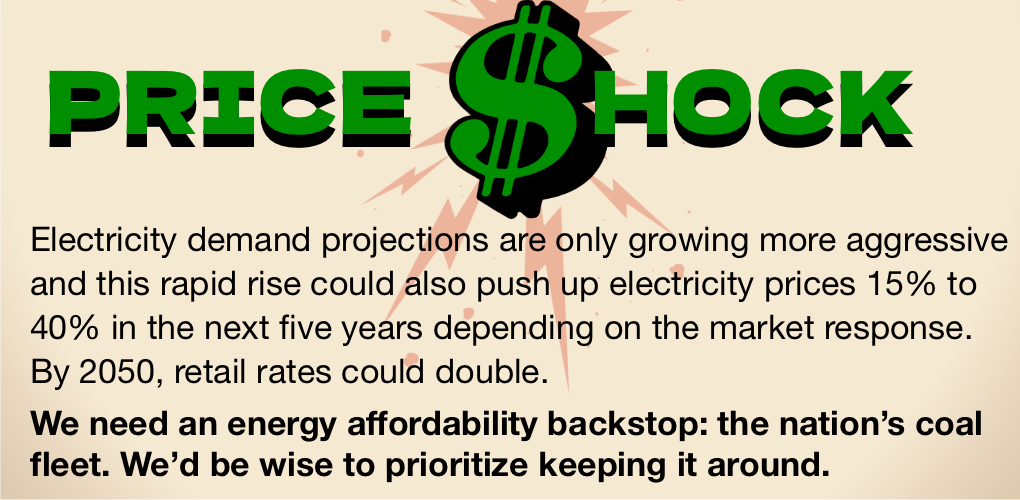
A Demand and Price Shock
As electricity prices continue to rise and grid reliability warnings proliferate, electricity demand projections are only growing more aggressive.
A new report from consulting group ICF International sees U.S. electricity demand jumping 25% by 2030 and 78% by 2050 compared to 2023. That surge in demand will have huge impacts on already teetering reliability and could send retail electricity prices skyward if energy policy doesn’t meet the moment.
According to the report, generating capacity reserve margins could fall into alarming territory as soon as 2030. If challenges persist in getting new capacity to the marketplace, and retirements of existing dispatchable capacity aren’t checked, much of the country wouldn’t be able to meet peak electricity demand as soon as 2028.
This rapid rise in demand could also push up electricity prices 15% to 40% in the next five years depending on the market response. By 2050, retail rates could double.
That startling increase in electricity prices would come on the shoulders of an existing jump already weighing on consumers.
Outpacing Inflation
According to recent analysis from the U.S. Energy Information Administration (EIA), retail electricity prices have increased faster than the rate of inflation since 2022, jumping 13%. In some parts of the country, the jump has been far steeper. In California, for example, electricity prices jumped 82% over the past 10 years.
Driving much of the rise in cost has been increased capital spending on new infrastructure to integrate wind and solar resources. EIA says utility spending on electricity distribution has in fact surpassed spending on electricity production—a timely reminder of the system costs of increased reliance on variable power.
Of course, also driving up costs are surging prices in key capacity markets. Capacity payments – an insurance premium paid to generators to ensure their availability during peak demand – jumped 800% in the PJM market last year and 2,100% in the MISO market this spring.
Facing the erosion of their reserve margins, electricity markets are trying to send signals to add more dispatchable generating capacity and keep the capacity already on the grid operating—a sharp rebuke to the Biden administration’s efforts to force well operating coal capacity into early retirement.
The nation’s energy regulators recognize we’re facing a power supply crisis, and that misguided policy is largely to blame. The U.S. is “losing dispatchable generation at a pace that is not sustainable and we are not adding sufficient equivalent generation capacity,” Federal Energy Regulatory Commission Chairman Mark Christie recently observed.
As ICF and others grapple with the demand challenge now on the horizon, calls for an all-of-the-above approach are a common refrain. What must be a centerpiece of that effort – what the Trump administration clearly recognizes – is the criticality of keeping existing coal generating capacity available.
The nation’s coal fleet is the single largest source of dispatchable capacity, unconstrained by pipeline or fuel availability, able to immediately meet rising demand.
In other words, these plants are our reliability – and affordability – backstop. We’d be wise to prioritize keeping them around.
- On May 21, 2025
